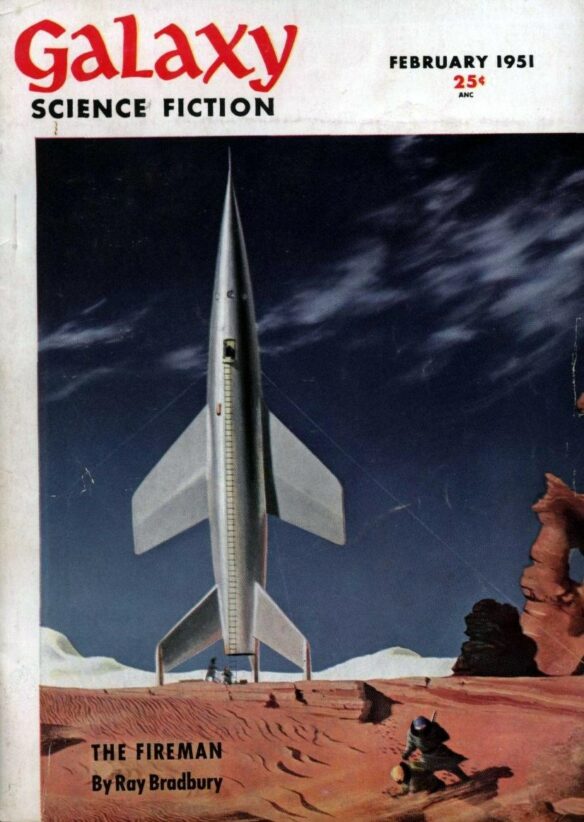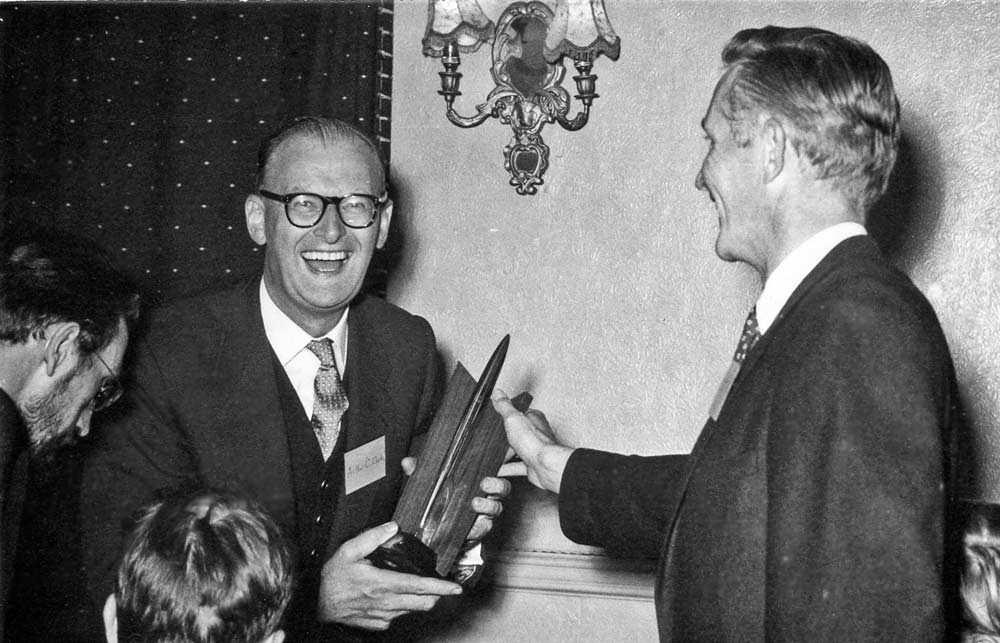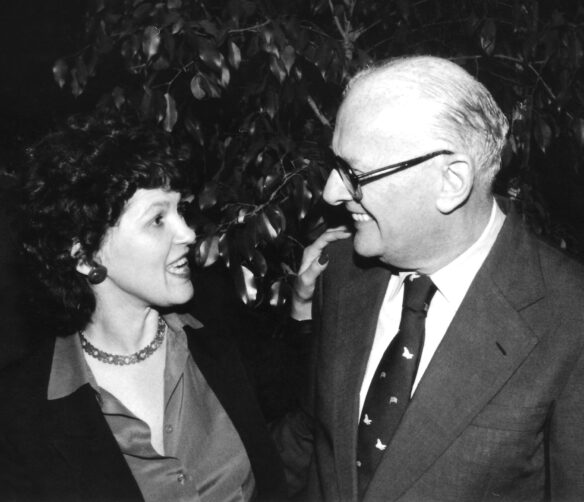(1) THE HILLS ARE ALIVE WITH THE SOUND OF MURDER. James Davis Nicoll assigned the “Young People Read Old SFF” panel a series of Hugo finalists to read. We’ve reached the end:
The final installment1 in Young People Read Old Hugo Finalists is Lois McMaster Bujold’s 1989The Mountains of Mourning. One of Bujold’s popular Miles Vorkosigan stories, Mountains is a murder mystery. Through Miles’ eyes, Bujold explores certain aspects of Barrayaran life generally kept off-stage thanks to the series’ focus on the aristocracy.
Mountains won the Best Novella Hugo, beating The Father of Stones by Lucius Shepard, A Touch of Lavender by Megan Lindholm, Time Out by Connie Willis, and Tiny Tango by Judith Moffett. I’ve not read the other finalists so I cannot compare them to the winner. I can say that Mountains was the first Bujold I read. It is the reason I have a shelf full of Bujold novels.
Fans liked it. I liked it. But did the Young People like it?…
Nicoll says the next project, debuting in 2024, is Young People Read Old Nebula Finalists.
(2) THEY LIVE! Galaxy is also being resurrected by the same company that has announced the relaunch of Worlds of IF. “Galaxy Science Fiction, February 1951 (FIRST-EVER WEBZINE REISSUE + new bonus content!)” at Starship Sloane Publishing.
I am happy to announce that this magazine, like its sister publication, Worlds of IF, is also being revived and relaunched by Starship Sloane Publishing Company, Inc.
This might be a slow process, as we are wonderfully busy with the booming relaunch of Worlds of IF already, and I have no desire to make things overly frenetic. The idea is to methodically breathe new life into Galaxy. It seems only fitting that these two magazines should walk hand in hand once again. I will be keeping this celebrated magazine skinny, minimalist in style, and highly selective. The quality of work will speak for itself….
… I do this for the love of creativity and science fiction. But I also strive for simplicity. If something becomes a self-imposed, burdensome form of work, I reevaluate. I will not place stressful expectations on myself here. A strict publishing schedule? Very unlikely. But semiannually sounds about right, I suppose….

(3) GONE IN POINT SIX SECONDS. The MinnPost believes people should be concerned with “Protecting physical media in an age of streaming”.
It’s been repeated, echoed and understood ad nauseam that we live in the streaming era.
We get it. Something that streamers may not understand, however, is that nobody owns their digital media.
The $12.99 spent through Amazon Prime Video to purchase “Barbie” is not “your” copy of the film. A person only has access to it until Amazon decides it doesn’t want to support the licensing anymore. This concept is not new or nuanced, but it is lost. The constant shuffling of online media between major streaming conglomerates has resulted in physical media’s futility in the eyes of the general public. We indeed live in the streaming age, but it’s also an age where the cultural impact of art preservation is needed more than ever.
This sentiment is not a condemnation against people using services like Netflix and Spotify. The convenience factor of these platforms is undeniable. However, combing through records, DVDs and books at local businesses should become something other than ancient practice.
Art preservation is at the forefront of this streaming puzzle because of the cultural significance of owning physical media. Much like artifacts, art has been replaced, lost and not protected. Now, instead of encouraging ownership of your favorite titles, businesses that still champion the physical media medium are fighting an uphill battle.
With all the revenue that floods in through streaming platforms, physical media becomes a nuisance to the profit margins of online Fortune 500s.
So, when a seemingly neglected and inevitable problem like this presents itself, the starting point of where to spark the renaissance can get blurred. Viewers, listeners, patrons and readers should look to local shops that allow physical media literacy to return to the mainstream….
(4) REVIEWERS’ PROTEST. Courtney Tonokawa told review blog readers ”I’m Participating in the St. Martin’s Press Reviewer Boycott!” in November at Courtney Reads Romance.
This is a brief post throwing my support behind the ongoing St. Martin’s Press reviewer boycott, which started in late October (as far as I’m aware; if anyone has more conclusive timeline information, please let me know). It is in response to a few major issues, like the general favoritism of white reviewers for ARCs over reviewers of color and, more recently, the behavior of a marketing employee in response to recent escalation in violence between Israel and Palestine, with said employee spewing Islamophobic and queerphobic rhetoric on their socials. All receipts and a more thorough recap of events can be found at the “Readers for Accountability” website here, along with a list of the boycott demands, screenshots, graphics, and all other relevant information.
But until those demands are met, in short addressing the actions of their employee and their action plan for the future, I am joining my fellow reviewers in withholding reviews and any other promo for St. Martin’s Press, and invite anyone else interested to join.
As Courtney’s post says, the allegations are documented at the “Readers for Accountability” website. Their overview of the complaints follows:
The boycott of St. Martin’s Press, Wednesday Books, and other related imprints is a direct response to the publishers lack of accountability regarding one of their employees. This employee, who we will not name here, posted Islamophobic, Queerphobic, and anti-Palestinian content on their personal social media. This content was shared in Instagram stories and was brought to our attention by Palestinian activist and BookToker @vivafalastinleen. Leen noted that while she is on the St. Martin’s Press influencer list, she never seemed to receive any of the ARCs she requested. Additionally, Leen noticed that her white counterparts would receive ARCs regularly. She began to question if this was a symptom of the employee’s bigotry when she was sent screenshots of a marketing Islamophobic employee sharing racist, Islamophobic pink washing content to their stories.
Leen attempted to reach out to St. Martin’s Press when the employee’s posts came to light, but struggled to receive a response and was largely ignored. Other influencers and content creators reached out as well with similar results. However, Leen did eventually receive email from Brant Janeway. However, the response was dismissive and defensive with no action being taken to investigate.The boycott was officially enacted after ten days of radio silence from St. Martin’s Press and Wednesday books. During those ten days, content creators were emailing, DMing, commenting, and making videos to demand that St. Martin’s Press make a statement to no avail. As such, Leen created a video that provided other creators with context for the boycott. This video also included a large amount of screenshots and context into why those screenshots are so dangerous. Twitter likes were also included so as to provide evidence of how deep the employee’s bigotry runs. Demands were issued for St. Martin’s Press and Wednesday Books in hopes and readers will continue to boycott the publishers and related imprints until those demands are met.
(5) WHO IS NUMBER ONE? Kim Ju-sŏng tells Guardian readers “’I repeatedly failed to win any awards’: my doomed career as a North Korean novelist”.
…I believe the reason my writing received poor evaluations lay primarily in my choice of genre. All of my stories took place in Japan, or had zainichi as the main characters. In North Korea these were dismissed as “foreign works”, the catch-all term for anything about the wider world. Like anywhere, in North Korean literary circles there is a fair amount of specialisation, and each writer has his or her own style and character.
The most highly regarded genre, it goes without saying, is No 1 literature – that is, works about members of the ruling Kim family. This is not a genre that just anybody can write. In order of esteem, the genres of North Korean literature are:
1) No 1 works: stories about the achievements and personalities of the Kim family.
2) Anti-Japan partisan works AKA revolutionary works: stories set within the colonial-era independence movement.
3) War works: stories set during the Korean war.
4) Historical works: stories set during the Yi, Koguryo or Koryo dynasties.
5) Real-life works: stories about ordinary society from the postwar to the present.
6) South Korean works: stories set in South Korea.
7) Foreign works: stories set anywhere outside Korea.
I was involved with foreign works. Aside from No 1 works, writers had free choice of any genre, and we were also free to move around and experiment between genres. But only the most elite, accomplished writers were permitted to produce No 1 works….
(6) STRANGER THAN FICTION (BUT NOT FOR LONG). [Item by Mark Roth-Whitworth.] People have seen me complain that I didn’t sign up to live in the cyberpunk dystopia we live in now, and thought I was exaggerating.
Nope.
Brian Krebs is probably the premier computer security journalist in the US. As I understand it, he had a column in the Washington Post, until the Post’s editors got freaked out by the number of what the police, and perhaps the FBI, considered “credible death threats”. My favorite story is from one of his investigations, the FBI followed the target, then suckered him to travel from eastern Europe to Guam, where he was arrested, extradited, and spent several years in US jails.
If you want to see the kind of thing he does… “Ten Years Later, New Clues in the Target Breach” at Krebs on Security.
Then tell me I’m exaggerating.
I’ve actually got a short story based on him that I’ve been trying to sell, but I guess it’s not “character-driven” enough (that I sincerely hope never happens, although he and his family have been swatted several times).
(7) SIMULTANEOUS TIMES. Space Cowboy Books presents episode 70 of the Simultaneous Times podcast. Stories featured in this episode:
“I Hope I Call You Back” by Tara Campbell – Music by Phog Masheeen – Read by Heather Morgan
“The Escape” by Jean-Paul L. Garnier – Music by Fall Precauxions – Read by the author
(8) TODAY’S BIRTHDAY.
[Written by Cat Eldridge.]
Born December 16, 1917 — Arthur C. Clarke. Sir Arthur C. Clarke is one of one of my of all time favorite writers, however, this will be not be an all-inclusive look at him, but what I like for his films and writings. So let’s me get started now…
As regards short works, Tales from the White Hart is without doubt the stories I like above all others. Like Niven’s Draco Tavern stories or those of Isaac Asimov’s Black Widowers, I adore stories told in a bar setting, and these are quite splendid.
Those are hardly his only great short stories. NyCon II would give him Hugo Award for “The Star” story which is wonderful, “The Nine Billion Names of God” got a well-deserved Retro Hugo at Noreascon 4, and Loncon 3 likewise honored “How We Went to Mars”. And I loved “A Meeting with Medusa” as well.

Which collection you pick up is your choice — The Collected Stories of Arthur C. Clarke currently being published legitimately in ebook format by Open Road Media has somewhere around ninety stories in it and is an excellent choice. It has “The Nine Billion Names of God” in it, another story of his I should note I love.
Novels? Well let’s start with The Fountains of Paradise if only because I got to actually got to see the setting in Sri Lanka that it’s based off of. Every bookshop there had copies of it. And it certainly deserved the Hugo it got at Noreascon Two.
I also have on my reading list the Hugo-nominated A Fall of Moondust, one of the better lunar colonization novels ever written; and likewise The Sands of Mars is a worthy look at using and that planet.
Now we come to Rendezvous with Rama which won a Hugo at DisCon II. Damn that’s a fascinating novel. I re-read maybe a decade back and I’m please to say that the Suck Fairy broke her toe trying to tarnish its reputation.
So films. Well it in my mind’s eye, there is but one film only and that is 2001: A Space Odyssey. I’ve seen it in cinema once, many times on a small screen. It’s wonderful. Yes, it got a Hugo at St. LouisCon.
That’s it for him. Have a good evening.

(9) COMICS SECTION.
- Tom Gauld remembers a school tradition.
- And Gauld finds an ability to predict the future can have bittersweet results.
(10) TUTTLE ROUNDUP. Lisa Tuttle’s “The best recent science fiction, fantasy and horror – reviews roundup” for the Guardian includes The Reformatory by Tananarive Due; The Lost Cause by Cory Doctorow; Him by Geoff Ryman; and Audition by Pip Adam
(11) CURATED HORROR. Gabino Iglesias picked “The Best Horror Books of 2023” for the New York Times. The column begins:
There were a ton of amazing horror books published in 2023, and as a genre, horror delivered so much — from fresh takes on vampire stories to historical works that looked at racism and misogyny. That made selecting just 10 titles for this list a formidable task. So consider this a personal pantheon of favorites from 2023.
Some of the books on this list are easy reads and some will challenge you. Some are long and multilayered while others have a great sense of humor or unfurl at breakneck speed. Some adhere to a classic understanding of horror and others aim to redefine it. The important thing is that they are all outstanding.
Silvia Moreno-Garcia is known for her ability to stylishly jump from genre to genre, and in SILVER NITRATE (Del Rey, 318 pp., $28), she goes full-blown horror. The book follows Montse, a sound editor navigating the macho culture of the film industry in Mexico City in the ’90s, and her best friend, Tristán, a soap opera star whose career is withering, as they help a horror director shoot a scene that’s really a ritual to break an awful curse. It’s a creepy, fast-paced tale filled with Nazis on the run and more. The novel is also Mexican to the core — it celebrates the country’s history, culture and films. This book pulls you in with its lovable, deeply flawed characters and gripping plot, and wows you with its eerie atmosphere and deft blend of historical fiction, horror and black magic….
(12) THE HOLE TRUTH IS OUT THERE. [Item by SF Concatenation’s Jonathan Cowie.] In this week’s Science journal there is an interesting piece that may explain the dark matter conundrum. Could tiny, primordial black holes made during the Big Bang, hiding in stars account for the missing mass??? “Do tiny black holes from cosmic dawn hide within giant stars?”
“…Might itty-bitty black holes from the dawn of time be lurking in the hearts of giant stars? The idea is not so far-fetched “

(13) CHRISTMAS SF BOOKS. [Item by SF Concatenation’s Jonathan Cowie.] It’s that time of year again to remind folk seeking SF/F books for themselves or as Christmas presents for others that the SF2 Concatenation seasonal news page has forthcoming Science Fiction and forthcoming fantasy book listings from the major SF/F book imprints over here in Brit Cit. Back when last season’s news page was posted, these titles were all forthcoming but now, with the festive season fast approaching, most of these are now out. With just six shopping days to Christmas, there’s just time to order from your favourite genre bookshop. Happy Crimble…
[Thanks to Chris Barkley, Cat Eldridge, SF Concatenation’s Jonathan Cowie, Mike Kennedy, Mark Roth-Whitworth, Andrew Porter, and John King Tarpinian for some of these stories. Title credit belongs to File 770 contributing editor of the day ULTRAGOTHA.]
